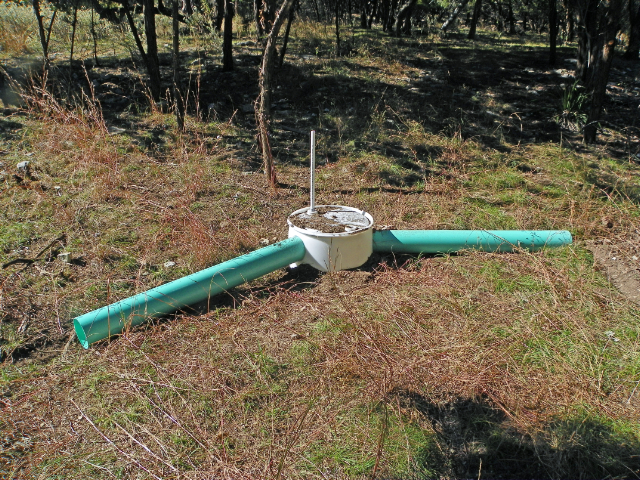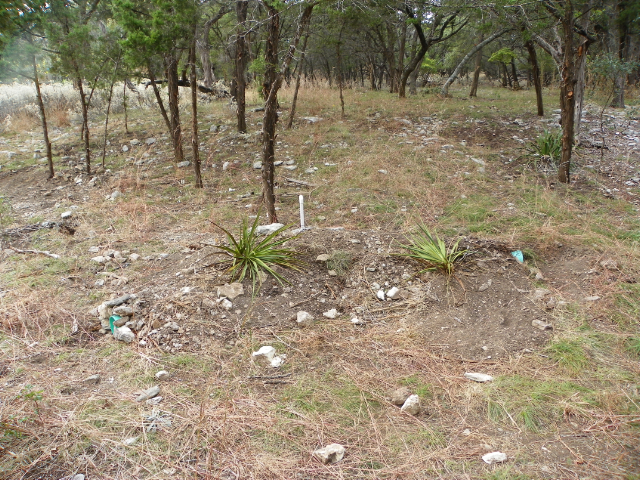We have two female gray foxes that visit J's Nest almost every evening. We believe they live in the undeveloped area of our property or the undeveloped area of neighboring properties. One of the foxes is older and has had several litters. She has not had a litter for two years, but the other fox, who is Madame Fox's daughter, has had a litter for the last two years.
Over the years, we have caught only fleeting glimpses of the kits, but last year we observed them going in and out of two 6" PVC pipes in the foundation of a neighbor's barn. They were almost grown by this time, but they were still dependent on mama (and grandma) for food.
In an attempt to have future litters stay "home" on our property, we have built a fox den. Following is a description of how we built it, along with supporting photos.
The site we chose to build it on is a natural depression, probably from where a large tree was uprooted decades ago. It is on a slight slope, not a low lying area, so it does not collect water. The site is in a wild area of the property and is situated such that we can observe it easily without being seen.
The materials we used are two 5' sections of 6" diameter PVC drain pipe, the top third of a plastic 55-gallon drum, and miscellaneous 3/4" PVC pipe and fittings.
We cut off the top third of the plastic 55-gallon drum. The plug in the top of the drum has a 3/4" pipe-threaded depression, and we cut out this opening in the other plug. We screwed a 3/4" PVC pipe fitting and section of pipe into the hole to create a vent pipe on top. We left it long enough to stick up through the dirt that we would be covering the den with.
Next, we cut 2 holes in the sides of the drum to accommodate the 2 sections of 6" pipe. The holes are positioned about 160 degrees apart to fit in with the terrain around the site. This gives the foxes 2 entrance/exits separated by about 12 or 13 feet.
To prepare the site, we cleared out rocks and sticks from the bottom of the depression so the foxes would be comfy. The drum section was then placed in the depression. We stuck the pipes into the openings and checked them with a 4' level to make sure they were sloped slightly downhill from the den so no water can run in. Then, dirt was carefully shoveled around the base of the drum and the pipes to hold them in place in preparation for burying the den.

With the den now firmly in place, we used our front end loader to cover it over with about a cubic yard of soil. We managed to scoop up a twist leaf yucca or two along with native sod to go on the top layer, so the den has a natural outward appearance. The final step was to cut the air vent pipe to length and install an upside down "U" made of two 3/4" PVC elbows and a short piece of pipe. This makes the air vent waterproof. The segments were not glued together, so we have a way of possibly placing a tiny camera in the den in the future, without having to dismantle the den.

We hope we made a foxworthy den. We have high expectations of seeing baby foxes this spring. Let us know if you have any questions. We'll update this web page when we see definite signs that the den is occupied. Wish us luck. We haven't staked the den out yet, but since we built the den, we have noticed one of the female foxes coming from that area around dusk.

